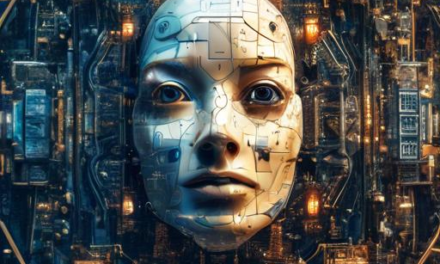In a world where art and technology entwine seamlessly, AI image generators have emerged as the new maestros, painting canvases with unprecedented speed and versatility. Yet, with great power comes great responsibility. As we marvel at the boundless creativity these virtual artists bring forth, it becomes imperative to navigate the ethical labyrinth that accompanies their rise. Whether you are an artist, developer, or simply an enthusiast of this vivid revolution, this article offers a guiding light through the intricate maze of ethical considerations. Join us as we explore the delicate balance between innovation and integrity, ensuring that the future of digital artistry remains as responsible as it is remarkable.
Table of Contents
- Defining the Ethical Landscape for AI Image Creation
- Balancing Creativity and Responsibility in AI Art
- Navigating Copyright and Fair Use Challenges
- Ensuring Diversity and Inclusion in Generated Imagery
- Addressing Bias and Stereotypes in AI Outputs
- Fostering Transparency and Accountability in AI Tools
- Encouraging User Education and Ethical Literacy
- To Conclude
Defining the Ethical Landscape for AI Image Creation
The rapidly evolving capabilities of AI image generators necessitate a well-defined ethical framework to guide their development and use. **Accountability** is pivotal; creators of AI tools must ensure transparency in how these systems function and make decisions. Clear documentation should define the limitations and biases that may arise in image generation, ensuring end-users are aware of the potential risks involved.
- Transparency in AI Design
- Public Disclosure of Biases
- Explicit Limitations and Risks
Secondly, **regulating misuse** is critical to prevent harmful scenarios, such as the generation of misleading or inappropriate images. Implementation of robust filtering mechanisms and user authentication can significantly reduce these risks. It’s vital to develop AI systems that respect cultural, social, and individual sensitivities, thereby avoiding the unintended perpetuation of stereotypes or offensive material.
- Robust Filtering Mechanisms
- User Authentication Procedures
- Consideration of Socio-Cultural Sensitivities
In terms of **intellectual property**, there is an urgent need for updated guidelines that address the ownership of AI-generated images. Creators and users must navigate the complex landscape of copyrights and usage rights, ensuring that the utilization of AI-generated content respects existing laws and the original creators’ rights.
| Aspect | Considerations |
|---|---|
| Ownership | Who owns the AI-generated image? |
| Usage Rights | Can the image be commercially used? |
| Compensation | How are creators compensated? |
Lastly, prioritizing **ethical use** ensures AI image generators contribute positively to society. Enforcing ethical guidelines can cultivate trust among users and stakeholders, fostering an environment where innovation and responsibility go hand in hand. Keeping the focus on beneficial applications, such as assisting in medical imaging or enhancing artistic creativity, underscores the transformative potential of these technologies when used responsibly.
- Enhancing Transparency
- Regulating Misuse
- Upholding Intellectual Property
- Promoting Ethical Use
Balancing Creativity and Responsibility in AI Art
Creating art with artificial intelligence brings a plethora of opportunities for artists and technologists alike. However, it’s essential to balance the exhilarating freedom of AI creativity with thoughtful responsibility. We must consider the ethical dimensions of what we create and how we share it with the world.
Respecting Original Artists
- Acknowledge inspiration: Always credit original artists whose work inspires AI-generated content.
- Avoid plagiarism: Ensure that AI art is unique and doesn’t replicate existing work without permission.
- Transparent algorithms: Disclose the datasets and algorithms used to generate the art.
Consider Emotional Impact
- Mindful content creation: Be aware of the emotional effects that AI-generated images might have on viewers.
- Sensitivity towards subjects: Approach culturally or socially sensitive topics with care and respect.
Addressing Misinformation
| Challenge | Solution |
|---|---|
| Fake news | Create and follow strict guidelines for realistic image manipulation. |
| Deepfakes | Implement and use watermarking or metadata for transparency. |
Environmental Responsibility
- Optimize energy use: Develop and use AI models that are energy-efficient.
- Reduce footprint: Consider the environmental impact of AI training and inference operations.
Navigating Copyright and Fair Use Challenges
- When developing a mode for your AI image generator, always remember that **respecting artist rights** is paramount. AI developers often find themselves walking a tightrope between innovation and legality. The most common challenge involves distinguishing between protected and public domain content. Always double-check the origin of your images, and if in doubt, obtain explicit permission.
- **Fair use** is another critical aspect to consider. This legal doctrine allows limited use of copyrighted material without requiring permission from the rights holders, but it has boundaries. In general, fair use covers commentary, criticism, news reporting, teaching, scholarship, and research, but remember that generating new images can blur these lines. Ensure your AI’s use case aligns with fair use principles to avoid legal pitfalls.
| Type of Use | Description |
|---|---|
| Commentary | Providing opinion or critique on the image’s content |
| Educational Purposes | Utilizing the image for teaching and learning |
| News Reporting | Using images to highlight newsworthy events |
| Transformative Use | Creating new meaning or message through alteration |
- **Transformative use** is crucial to safely navigating fair use. This refers to adding a new expression or meaning to the original material, making it essential to weigh how your AI-generated image transforms the source material. For instance, if an AI image generator creates a parody or satire, this transformative aspect could be protected under fair use.
- Still, it’s prudent to establish a system for **regular audits** to ensure compliance. Regularly review and document the image sources your AI relies on and keep a record of obtained permissions. A transparent audit trail not only helps in staying within legal boundaries but also demonstrates due diligence if any copyright disputes arise.
Ensuring Diversity and Inclusion in Generated Imagery
To foster a sense of belonging and fairness in generated imagery, it is crucial to prioritize diversity and inclusion. This approach not only enriches the content but also resonates with varied audiences, reflecting the global tapestry of human life.
**Key Strategies include:**
- **Diverse Data Sets**: Ensure that training data reflects a wide array of ethnicities, cultures, and societal backgrounds.
- **Balanced Representation**: Aim for equal representation of genders, ages, and abilities. This involves including images of people with disabilities in various contexts.
- **Cultural Sensitivity**: Be wary of stereotypes and cultural misrepresentations by implementing rigorous review processes.
| Key Area | Best Practice |
|---|---|
| Diverse Data Sets | Include imagery from multiple continents, ethnicities, and lifestyles. |
| Balanced Representation | Equally depict males and females, different age groups, and people with varying abilities. |
| Cultural Sensitivity | Avoid clichés and ensure authentic representation via input from cultural experts. |
**Ethical Review Process**: The ethical review process is indispensable for maintaining an inclusive approach in AI-generated imagery. Regular audits and feedback loops involving diverse teams can mitigate biases that may unintentionally creep into the content. Incorporating public feedback can also provide a broader perspective, ensuring that generated images resonate well across different cultures and demographics.
By being intentional about diversity and inclusion, AI image generators not only comply with ethical guidelines but also set a standard that promotes equality and respect. Such an approach not only enhances the credibility of the content but also empowers users who find themselves authentically represented in generated imagery.
Addressing Bias and Stereotypes in AI Outputs
The deep-rooted issue of bias and stereotypes in AI image generators is a challenge our industry must confront boldly. Everyday users encounter and interact with outputs shaped by historical and cultural biases embedded in vast training datasets. These innocuous-seeming biases can perpetuate harmful stereotypes, giving rise to outputs that lack diversity or reinforce prejudiced views. As creators and users of AI technology, it is our shared responsibility to ensure our image generators are both equitable and representative.
To mitigate bias effectively, we must focus on the following key areas:
- Inclusive Data Collection: Ensuring that the data used to train AI models is rich and varied. Incorporating diverse images can provide a more representative picture, minimizing the risks of reinforcing stereotypes.
- Regular Audits: Conducting frequent reviews of AI outputs to identify patterns of bias and address them promptly. This iterative approach helps in continually refining and improving the AI systems.
- Transparency: Making the underlying algorithms and data sources more transparent allows users and independent researchers to understand how results are generated, fostering trust.
User Feedback Integration: Another crucial aspect is actively incorporating user feedback to refine AI outputs. Many times, the insights from diverse user communities can highlight issues that might not be apparent during initial development stages.
| Best Practice | Description |
|---|---|
| Bias Testing | Regularly test AI outputs for unintentional bias or stereotypes. |
| Community Engagement | Engage with diverse communities for feedback and perspectives. |
| Continuous Learning | Update training data periodically to reflect evolving societal norms. |
Furthermore, fostering an organizational culture that prioritizes ethical considerations in AI development can make a significant difference. Training developers and data scientists in ethical AI practices ensures these principles are integrated into every phase of development, from data collection to algorithm tweaking.
By championing these strategies, we can contribute to the creation of AI image generators that are not only innovative but also respect and enhance the diversity of the world we live in.
Fostering Transparency and Accountability in AI Tools
Transparency and accountability in artificial intelligence are cornerstones for building trust with users and stakeholders. Implementing **AI image generators** must involve clear communication about how these tools work, the data they are trained on, and their potential impacts. One effective way to enhance transparency is by providing detailed documentation and open-source access to the underlying algorithms. By doing so, developers and users can better understand the decision-making processes, fostering a more open and cooperative AI environment.
To maintain accountability, it’s crucial to establish strict ethical guidelines for the use of AI image generators. These guidelines should include:
- Bias Mitigation: Ensuring that the datasets used are diverse and representative of various demographics to prevent biased outputs.
- Verification Mechanisms: Implementing systems to verify the originality of generated images to combat misinformation and deepfakes.
- User Control: Providing users with controls to fine-tune and understand the generation process, enhancing trust and reliability.
- Data Privacy: Upholding stringent privacy standards to protect user data and prohibit unauthorized access.
**User education** is another critical aspect of fostering transparency and accountability. AI image generator platforms can offer tutorials, FAQs, and community forums to help users understand best practices and the ethical use of these tools. Regular updates on advancements and changes in the AI algorithms also keep the user base informed and engaged.
An essential component of these guidelines is the inclusion of feedback mechanisms. Creating channels for users to report issues or suggest improvements fosters a collaborative atmosphere. This feedback loop not only helps in refining the AI tool but also ensures the community’s voices are heard and valued.
| Key Grooves | Actions |
|---|---|
| Transparency | Open-source algorithms, detailed documentation |
| Accountability | Ethical guidelines, bias mitigation |
| User Education | Tutorials, FAQs, community forums |
| Feedback Loop | User reports, suggestions |
Encouraging User Education and Ethical Literacy
Understanding the ethical dimensions of using AI image generators is pivotal in fostering a responsible digital community. Users must develop a keen awareness of their influence, practicing caution in the rapid production and dissemination of AI-generated visuals. **Education** plays a crucial role in this journey, empowering individuals to navigate both the capabilities and limitations of these technologies wisely.
- **Mindful Creation**: Regular users must be mindful of the potential societal impact of their generated content. Paying attention to cultural sensitivities and avoiding the generation of explicit or misleading images helps maintain a respectful online environment.
- **Source Validation**: Always verify the sources and authenticity of the base images or concepts used. Ensuring credit is given where due, and intellectual property rights are respected, paves the way for ethical digital practices.
It is essential to adopt a **culture of accountability**. Tools and guidelines can support users in making ethical choices. For instance, implementing a review system where generated images undergo a brief ethical evaluation before being shared can drastically mitigate misuse.
| Principle | Details |
| Transparency | Clearly label AI-generated images to distinguish them from real ones. |
| Consent | Ensure subjects in base images have given consent for their likeness to be used. |
Promoting **ethical literacy** can also be achieved through interactive workshops and educational resources. By engaging in community discussions and training programs, users can share insights and best practices, thereby elevating the collective standard of digital ethics.
remember that **continuous learning** is key. The AI landscape evolves rapidly; staying abreast of new developments and ethical considerations ensures responsible usage. By empowering users with the right knowledge and tools, we can foster a more ethical and conscientious AI ecosystem.
To Conclude
As we navigate the exciting yet complex world of AI image generators, it is essential to always keep ethical considerations at the forefront. By adhering to the guidelines outlined in this article, we can harness the power of technology to create stunning visuals while also upholding the values of fairness, transparency, and accountability. Together, let’s continue to push the boundaries of innovation responsibly and ensure a brighter future for AI image generation. Remember, the possibilities are endless when we prioritize ethics in our pursuit of creative brilliance. Thank you for joining us on this journey towards a more ethical and innovative world. Until next time, keep creating with integrity and passion.































